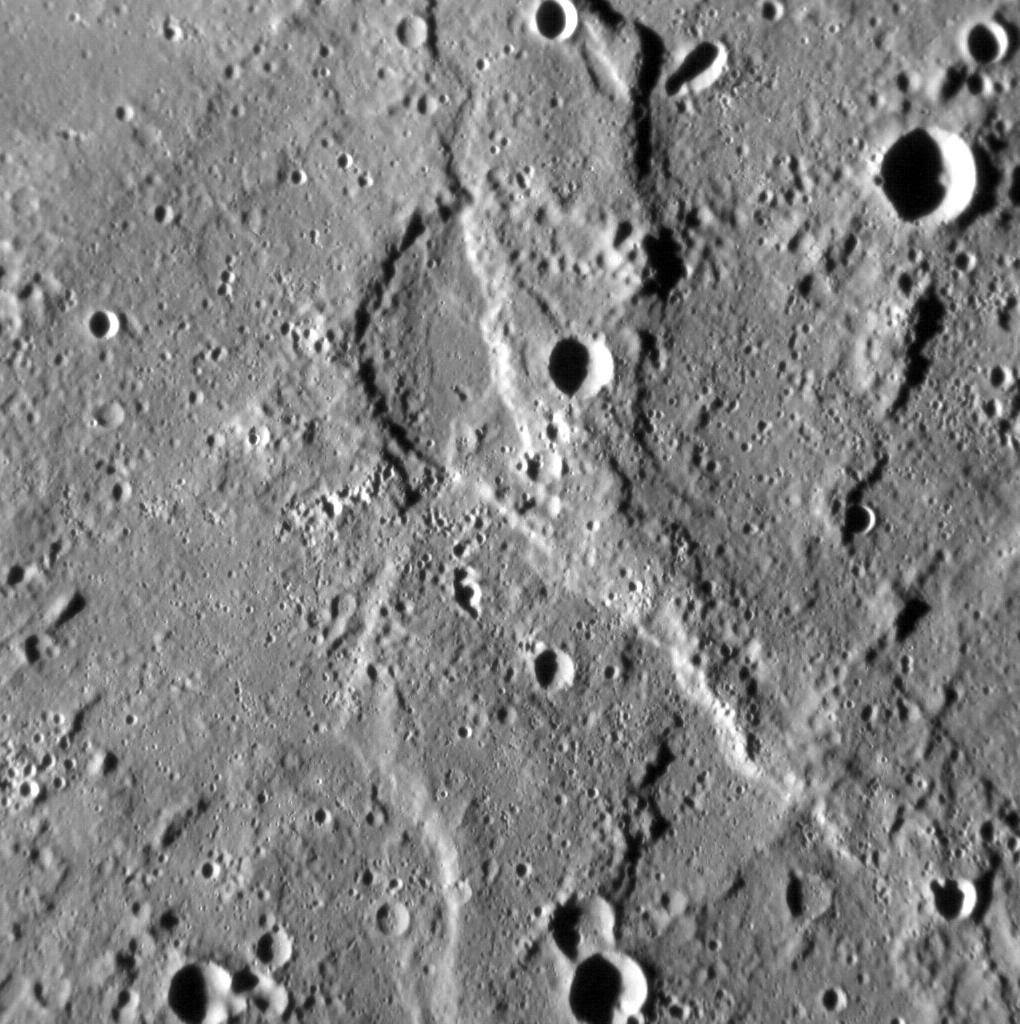As anticipated in Monday's posting, MESSENGER has started to send back its two-month backlog of images. Included in the recently arrived batch is this triple take of Xiao Zhao. This image is very similar to this image from June 2012 and this image from December 2012; Xiao Zhao is one of the locations being repeatedly imaged to look for any slight hints of change.
This image was acquired as a high-resolution targeted observation. Targeted observations are images of a small area on Mercury's surface at resolutions much higher than the 200-meter/pixel morphology base map. It is not possible to cover all of Mercury's surface at this high resolution, but typically several areas of high scientific interest are imaged in this mode each week.
Date acquired: December 04, 2013
Image Mission Elapsed Time (MET): 28472584
Image ID: 5318200
Instrument: Narrow Angle Camera (NAC) of the Mercury Dual Imaging System (MDIS)
Center Latitude: 10.65°
Center Longitude: 123.94° E
Resolution: 34 meters/pixel
Scale: Xiao Zhao is 24 km (15 miles) in diameter
Incidence Angle: 24.9°
Emission Angle: 32.4°
Phase Angle: 44.7°
Photo credit: NASA/Johns Hopkins University Applied Physics Laboratory/Carnegie Institution of Washington













